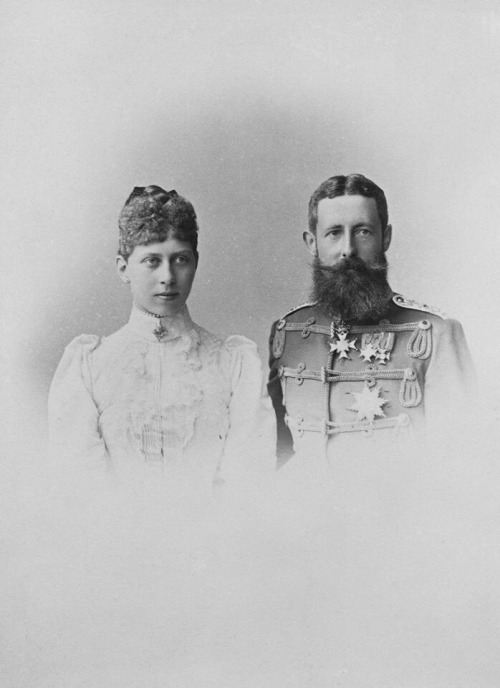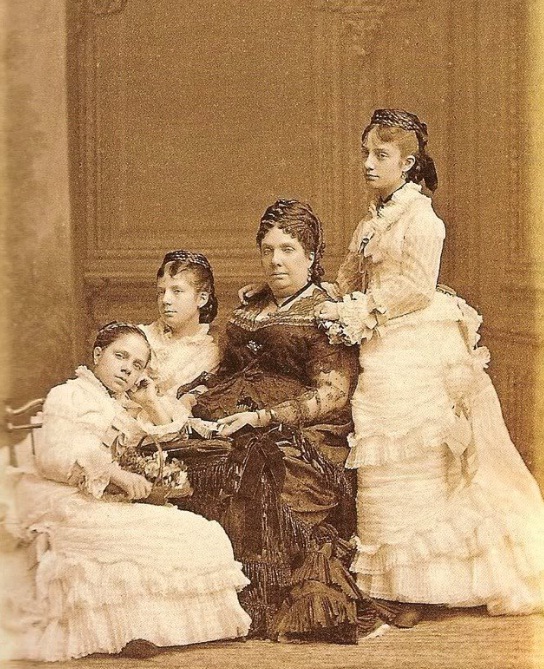by Emily McMahon © Unofficial Royalty 2013

Francisco, Duke of Cadiz, King Consort of Spain; Credit – Wikipedia
Born on May 13, 1822, at the Royal Palace of Aranjuez in Aranjuez, Spain, Francisco de Asís María Fernando de Borbón y Borbón-Dos Sicilias was the eldest surviving son and the third of the eleven children of Infante Francisco de Paula of Spain, the youngest son of King Carlos IV of Spain, and his wife, Luisa Carlotta of the Two Sicilies.
Francisco had ten full siblings:
- Francisco de Asis de Borbón, Infante of Spain (1820 – 1821), died in infancy
- Isabel de Borbón, Infanta of Spain (1821- 1897), married morganatically Count Ignaz Gurowski
- Enrique de Borbón, Duke of Seville (1823 – 1870), married morganatically Elena de Castellvi y Shelly-Fernandez de Cordova, had five children
- Luisa de Borbón, Infanta of Spain (1824 – 1900), married morganatically José Maria Osorio de Moscoso, Duque de Sessa
- Duarte Felipe de Borbón, Infante of Spain (1826 – 1830), died in childhood
- Josefina de Borbón, Infanta of Spain (1827–1920), married, morganatically, José Güell y Rente
- Teresa de Borbón, Infanta of Spain (1828–1829), died in infancy
- Fernando de Borbón, Infante of Spain (1832 – 1854)
- Maria Cristina de Borbón, Infanta of Spain (1833–1902); married Infante Sebastian of Portugal and Spain, had five children
- Amelia de Borbón, Infanta of Spain (1834 – 1905); married Prince Adalbert of Bavaria, had five children
Francisco had one half-brother from his father’s second, morganatic marriage to Teresa de Arredondo y Ramirez de Arellano:
- Ricardo María de Arredondo, Duke of San Ricardo (1852 – 1872), unmarried
In a series of diplomatic twists and turns, called the Affair of the Spanish Marriage, Francisco became the husband of a reigning queen. Queen Isabella II of Spain was to marry a groom proposed by the British, Prince Leopold of Saxe-Coburg and Gotha, a first cousin of Queen Victoria and her husband, Prince Albert. Instead, the Spanish Moderate Party insisted that Queen Isabella II marry Francisco and Isabella’s younger sister, Luisa Fernanda, marry Antoine d’Orléans, Duke of Montpensier, the younger son of King Louis Philippe of France.
French King Louis-Philippe supported these marriages, as Antoine was his son. Louis-Philippe thought that Francisco and Isabella would be childless due to Francisco’s suspected homosexuality, and that the children of Antoine and Luisa Fernanda (his grandchildren) would eventually succeed to the Spanish throne. On October 10, 1846, Francisco married his double first cousin, Queen Isabella II of Spain, and Isabella’s younger sister, Luisa Fernanda, married Antoine d’Orléans, Duke of Montpensier, the younger son of King Louis Philippe of France.
Francisco and Isabella’s marriage was not happy. There were persistent rumors that few, if any, of her children, were fathered by her husband. Nevertheless, Francisco claimed all the children as his. Only five of the nine reached adulthood. The only surviving son was King Alfonso XII of Spain.
- Ferdinand (born and died 1850)
- Isabella, Princess of Asturias (1851 – 1931), married Prince Gaetan, Count of Girgenti, no issue
- Maria Cristina (born and died 1854)
- Alfonso XII, King of Spain (1857 – 1885), married (1) Maria de las Mercedes of Orléans, no issue; (2) Maria Christina of Austria, had issue, including King Alfonso XIII of Spain
- Maria de la Concepcion (1859 – 1861), died young
- Maria del Pilar (1861 – 1879)
- María de la Paz, Princess of Bavaria (1862 – 1946), married Prince Ludwig Ferdinand of Bavaria, had issue
- Francisco de Asis (born and died 1863)
- Eulalia, Duchess of Galliera (1864 – 1958), married Infante Antonio, Duke of Galliera, had issue

From left to right: Marchioness of Malpica with Alfonso, Prince of Asturias on her lap; Francisco, Queen Isabella II, the royal wet nursemaid holding María de la Concepción, and Isabella, 1860; Credit – Wikipedia
Isabella’s authoritarianism, her religious fanaticism, her alliance with the military, and the chaos of her reign — sixty different governments — helped bring about the Revolution of 1868 that exiled her to Paris. The new government replaced Isabella with Amadeo I, the second son of Victor Emmanuel II of Italy. During Amadeo’s reign, there were many republican uprisings, and he abdicated in 1873 and returned to Italy. The First Spanish Republic was declared, but it lasted less than two years. Isabella officially abdicated in 1870, and after the First Spanish Republic collapsed, her son Alfonso XII became king.
Francisco accompanied his deposed wife into exile in 1868, but they soon separated. While the marriage was unhappy, Francisco and Isabella formed a friendly relationship after they separated. Francisco died on April 17, 1902, in Épinay-sur-Seine, France. Isabella died from influenza complications in Paris on April 10, 1904. Isabella and Francisco are buried in the Pantheon of Kings at the Royal Site of San Lorenzo de El Escorial in San Lorenzo de El Escorial, Spain.

Tomb of Francisco, King Consort of Spain; Credit – www.findagrave.com
This article is the intellectual property of Unofficial Royalty and is NOT TO BE COPIED, EDITED, OR POSTED IN ANY FORM ON ANOTHER WEBSITE under any circumstances. It is permissible to use a link that directs to Unofficial Royalty.
Kingdom of Spain Resources at Unofficial Royalty
- Kingdom of Spain Index
- Line of Succession to the Throne of Spain
- Monarchs of a United Spain (since 1516)
- Profiles of the Spanish Royal Family
- Spanish Royal Burial Sites
- Spanish Royal Christenings
- Spanish Royal Dates
- Spanish Royal FAQs
- Spanish Royal Links
- Spanish Royal Weddings
- Spanish Royal Residences
















